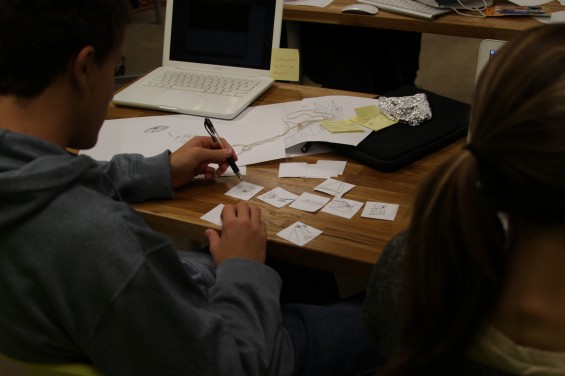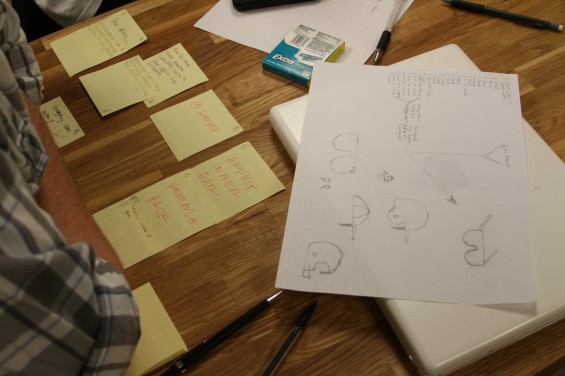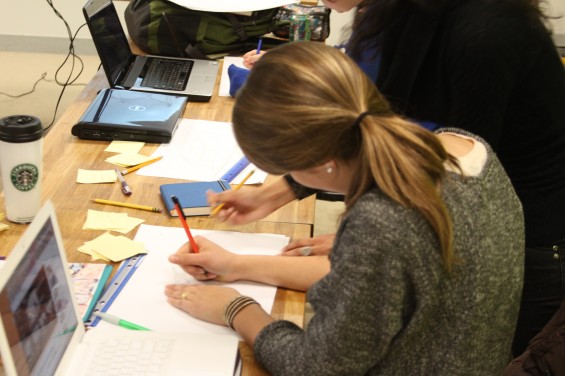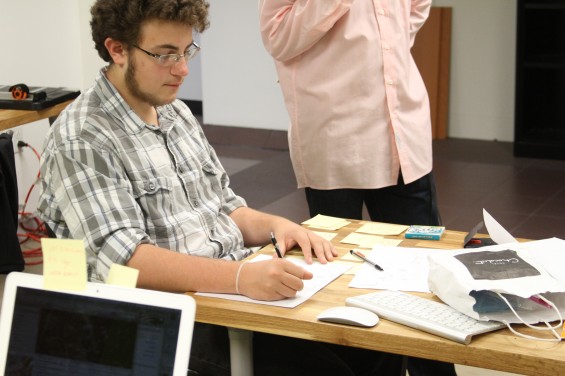
Envisioning Now, Day 2 by S. Adrian Massey III 10/19/10 Tuesday we reviewed product design processes. We looked at iterative models for product development where many design iterations can be created and tested simultaneously. We reviewed participatory design methods like democratic brainstorming and usability methodologies. Lastly we reviewed integrative methods of design specifically focusing on the future of parametric collaborative workspaces like CATIA. These modern digital workspaces allow for dynamic interchangeability of design elements. With this understanding we engaged in a post-it brainstorm, where the students shared their ideas with the class and the class responded with more ideas to push each project further.

After the brainstorm we reviewed sketching for hard products, fabrics, and digital experiences. We then engaged in an isometric drawing exercise. The students ran into some difficulty with understanding the principles of isometric drawing given the fact that this was the first time many of them had attempted a technical drawing. There was one student in particular who did not understand the spatial relationship of the lines at the beginning of the exercise, but with the use of a ruler and some detailed explanation of each line, she reached a modest ability to read an isometric drawing. This drawing exercise created a segway to thumbnail iterative sketching. The aim was to use the ideas that had been shared during the brainstorm session and elaborate on them in 25 quick thumbnail sketches. My expectation was to complete this project in 30 minutes. To my surprise the activity took the remainder of the day. The task of iterating 15 additional simple sketches on a single concept commanded a willingness that the students were not sure how to trust.

Envisioning Now, Day 3 by S. Adrian Massey III 10/20/10 We began the day by reviewing industrial production processes for metal, plastic, knitwear and fabric. The aim of the presentation was to illustrate a few ways in which a commercial product can be produced. At the same time it underscored the rate and volume of industrial production today.

Following the lecture, each student presented their scenarios, mood boards, and sketches. The goal was to take a step back from the project to be able to see how much work and thought had been invested. To my dismay, some students still did not have their projects sketched. Afterwards the students were responsible for completing their projects with a final rendering/collage, all package in a presentation with descriptive text.
:rotate(0)/p39f1jed4mgd288myquiu5yecweg)